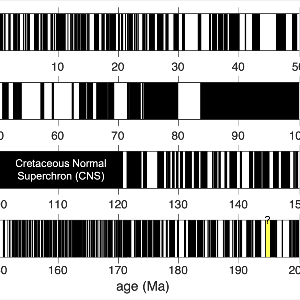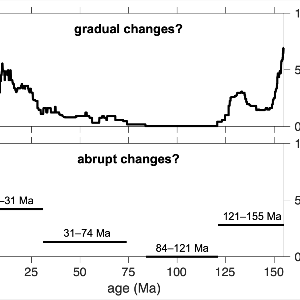
© Florian Lhuillier
Florian Lhuillier von der LMU präsentiert seine Forschung in einem Vortrag mit dem Titel "Detecting geodynamo regimes in the palaeomagnetic record". Der Vortrag findet auf englischer Sprache statt.
Co-Host ist dieses Mal Sanja Panovska.
Des DeepDyn Seminar findet online als zoom-meeting statt. DeepDyn Mitglieder erhalten den Zuganglink automatisch vor dem Seminar. Wir bitten externe Seminargäste sich für das Seminar zu registrieren, um den Zugangslink zu erhalten.
Detecting geodynamo regimes in the palaeomagnetic record

Abstract
(in englischer Sprache)
Over geological time, the geomagnetic field—generated by a dynamo in the Earth’s fluid outer core—significantly varied its rate of polarity reversals, from prolonged periods (> 20 Myr) with stable polarity termed superchrons to episodes of hyperactivity with a reversal rate greater than 10 Myr–1. Described in first approximation by a geocentric axial dipole, the geomagnetic field also experienced directional fluctuations around its dipolar geometry (usually referred to as palaeosecular variation, PSV) as well as changes in the strength of its dipole moment. In this presentation, we will discuss how palaeomagnetic observations can be used to address the controversial issue whether the amplitude of PSV and the average dipole strength correlate with the rate of polarity reversals.

First, we will examine new palaeodirectional records from (i) sequences of lava flows emplaced at high palaeolatitude in Chukotka (NE Eurasia) before and after the end of the Cretaceous Normal Superchron (CNS, 84–121 Ma), and (ii) collections of lavas emplaced at mid palaeolatitude in Germany during the Cainozoic. They tend to confirm a distinct PSV regime of the geodynamo during the CNS but show an apparent decoupling between the amplitude of PSV and the reversal rate after the end of CNS. Second, we will present new absolute palaeointensity determinations acquired on baked sediments from Hainan (SE Asia). They are consistent with a stronger dipolar field during the CNS than during the early and late Cretaceous. However, we will also underline that the interpretation of the absolute palaeointensity database is ambiguous and largely depends on the choice of the selection criteria. Finally, we will report on the prospect of using a new approach based on the correlation between local geomagnetic field strength and inclination (angle made by the horizontal with the field lines) to detect dipolarity regimes of the geodynamo over the Earth’s history.
mehr Informationen zum DeepDyn Projekt von Florian Lhuillier
Link zum nächsten Seminarvortrag
mit Juliane Dannberg (Geomar und Universität Kiel)
